HIROSHIMA
CITY OF PEACE AND RESILIENCE
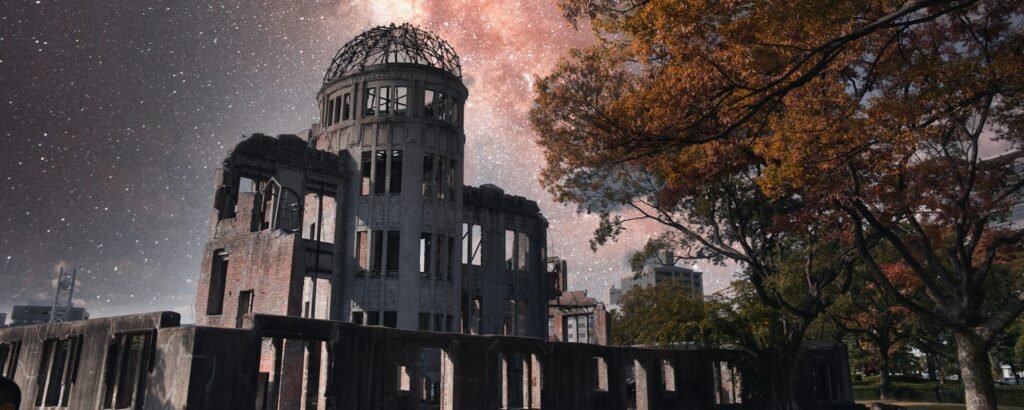
It helps keep this site running, and we appreciate your support!
Sightseeing
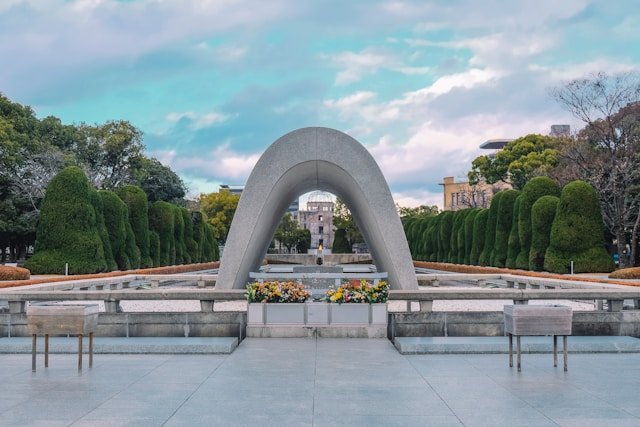
Hiroshima Peace Memorial Park
This sprawling green space sits where the atomic bomb hit, a quiet reminder turned into a call for peace. The park’s got monuments like the Cenotaph and the eternal flame, but the real pull is the museum—raw, real, and packed with stories from that day in 1945. It’s steps from the Atomic Bomb Dome, the skeletal survivor of the blast, making it a one-two punch of history you can’t unfeel.
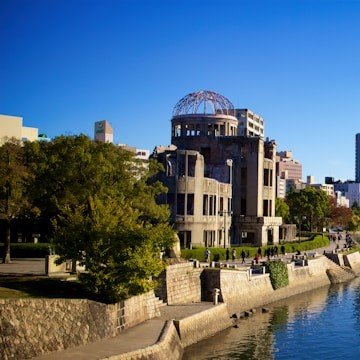
Atomic Bomb Dome
The Atomic Bomb Dome, known in Japanese as 原爆ドーム (Genbaku Dōmu), stands as Hiroshima’s rawest scar from August 6, 1945, when the first atomic bomb detonated 150 meters above it, killing tens of thousands instantly. Originally the Hiroshima Prefectural Industrial Promotion Hall, designed by Czech architect Jan Letzel in 1915, it was one of the few structures left standing near ground zero, its skeletal dome and shattered walls frozen in time by the blast’s heat and force. Preserved as a UNESCO World Heritage site since 1996, it’s not just a ruin but a deliberate memorial—quiet, haunting, and unpolished, sitting by the Motoyasu River across from the Peace Memorial Park. Visitors walk past its twisted iron and cracked concrete, feeling the weight of history; it’s free to see, lit up softly at night, and a stark reminder of destruction paired with a plea for peace that hits harder the longer you linger.
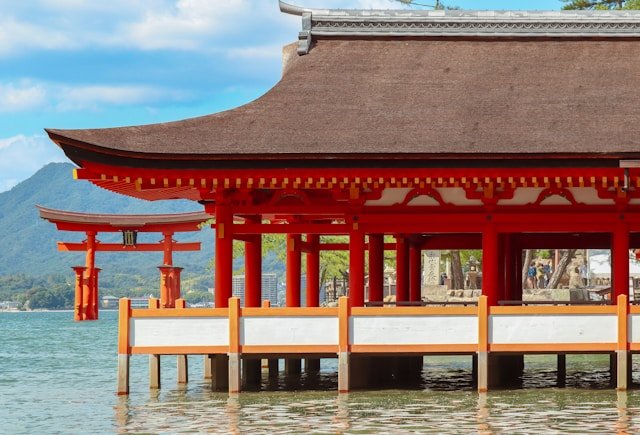
Itsukushima Shrine (Miyajima Island)
A ferry ride from the city, Miyajima’s got this red torii gate that looks like it’s floating at high tide—pure magic, and one of Japan’s top views. The Itsukushima Shrine itself is a wooden marvel, built over water, with deer wandering around like they own the place. It’s a UNESCO gem that mixes nature and reverence, worth every second of the trip.
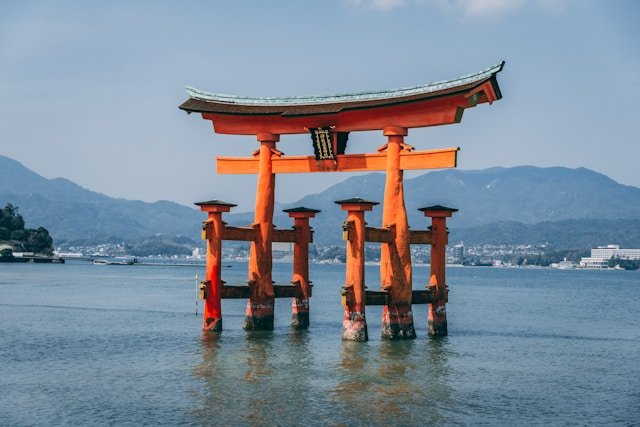
Great Torii (Miyajima Island)
The Torii Gate of Itsukushima Shrine on Miyajima Island is a jaw-dropping sight, a massive red-orange arch that seems to float on the water at high tide, earning its nickname as Japan’s “floating gate.” Built in 1168 and part of a UNESCO World Heritage site, it marks the entrance to the Shinto shrine, standing 16 meters tall with legs sunk into the seabed—no concrete, just pure balance. At low tide, you can walk right up to it, spotting coins tossed for luck wedged into its barnacle-crusted wood.
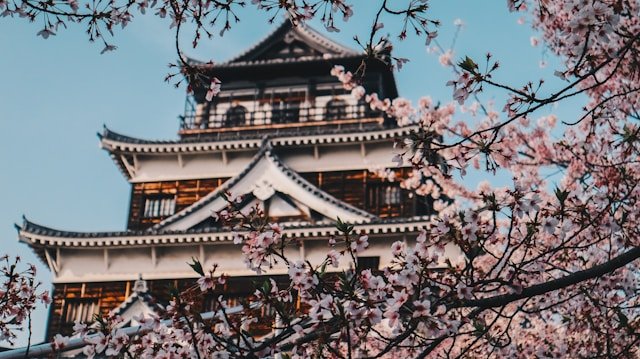
Hiroshima Castle
Rebuilt after the bomb, this fortress rises with its moat and five-story tower, a nod to the samurai days under Mori Terumoto. Inside, it’s a museum with armor, swords, and a top-floor lookout over the city—killer in spring with cherry blossoms. It’s a short walk from Shukkei-en Garden, tying history to a peaceful stroll.

Shukkei-en Garden
Shukkei-en Garden, tucked near Hiroshima Castle, is a compact slice of old Japan, built in 1620 for the Asano clan as a retreat that mimics grand landscapes in miniature. Its name means “shrunken scenery,” and it delivers with a central pond, a little arched bridge, and paths winding through bamboo and plum trees. Bombed in 1945, it was lovingly restored, and now it’s a peaceful spot—especially in spring with cherry blossoms or fall with red maples—perfect for a quick stroll or a breather from the city’s heavier sights.
Flights
Hotels
This high-rise gem sits right in Hiroshima’s beating heart, delivering a polished stay with rooms that feel like a treat—think cushy beds, sweeping city views through big windows, and all the tech you need like fast Wi-Fi. It’s got a lineup of restaurants, from a sky-high buffet to a cozy bar, plus a pool and gym for kicking back after a day out. The staff’s top-notch, always ready with a warm vibe and solid tips, making it a perfect launchpad for your trip. You’re a short walk from Hiroshima Castle’s samurai swagger and the Peace Memorial Park with the Atomic Bomb Dome—big history, right at your feet.
Tied straight to Hiroshima Station, this spot’s a winner for anyone who loves convenience, with modern rooms that nail the basics—comfy beds, free internet, and a layout that’s easy to settle into. The breakfast spread’s a crowd-pleaser, mixing local bites with familiar options, and there’s a lounge for unwinding with a drink. It’s got that lively station buzz but keeps things calm inside, ideal for jumping into the city or heading out on day trips. Shukkei-en Garden’s tranquil paths are a quick tram ride away, and the Peace Memorial Park plus Atomic Bomb Dome are close for a deep dive into Hiroshima’s story.
Planted in the downtown hustle near Hatchobori Station, this place keeps it fresh and straightforward—rooms are snug but sharp, with good beds and Wi-Fi that doesn’t quit. The staff’s on the ball, and the breakfast options get you out the door fueled up without any fuss. It’s surrounded by shops and food joints, so you’re always in the mix, whether you’re grabbing a quick bite or browsing. The Hiroshima Peace Memorial Park and Atomic Bomb Dome are an easy stroll away, and Hiroshima Castle’s historic grounds are just up the street—sightseeing’s practically built in.
Nestled by the river near Otemachi, this spot brings a modern, chill vibe with rooms that hit all the right notes—cozy beds, clean design, and reliable Wi-Fi to keep you plugged in. The staff’s got that friendly edge, quick to help out, and there’s a lounge area that’s perfect for kicking back after a long day. The riverside location adds a peaceful twist, a nice break from the city grind. It’s a stone’s throw from the Atomic Bomb Dome and Peace Memorial Park’s heavy-hitting memorials, with Hiroshima Castle’s towers just a bit further—history’s all around you here.
Right by Hiroshima Station, this place rocks a crisp, modern feel—rooms with soft beds, a bit of extra space, and all the gear like fast internet and a decent TV to unwind. The breakfast mixes Japanese and Western flavors, hearty enough to start your day right, and the staff’s smooth and welcoming, keeping everything easy. It’s a great jumping-off point for trips around town or beyond, with a relaxed vibe despite the station’s hum. Shukkei-en Garden’s quiet beauty is nearby, and the Peace Memorial Park with the Atomic Bomb Dome are a short tram ride—key sights without the hassle.
Dining
Tips
Value Index
Hotels hit a sweet spot with clean, comfy options that don’t gouge, and big draws like the Peace Park are free or cheap (museum’s 200 yen). Spring and fall bump costs with crowds, and extras like Universal Studios can add up, but the mix of history, food, and vibe for the price makes it a solid deal.
